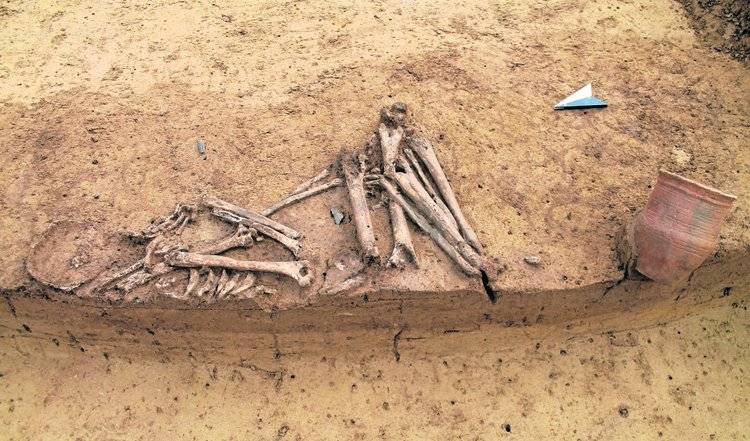Shark eggs, skeletons and silver coins Archaeologists involved in more than 500 excavations in the Rhineland in 2018
BONN · The Rhineland has a rich history, with archaeological findings in the last year revealing fossils, skeletons and objects that date back to the Roman Empire and even millions of years to the Paleozoic Era. It was a record year with more then 500 archaeological projects underway.
In 2018, the Rhineland Regional Council (LVR) for Land Conservation made numerous spectacular discoveries: A construction project in Wuppertal turned out to be a stroke of luck for researchers in paleontology. 365 million year old sediments from the Paleozoic Era were discovered on an area of 8500 square meters. Among the findings were several trilobites (three-lobed creatures similar to a crab), previously unknown to the area, a complete serpent star, corals, crinoids (sea lilies) and fish remains.
The last coal mines closed at the end of 2018 and shortly before that happened, researchers targeted the recovery of fossils from the rocks of the Upper Carboniferous (from 317 to 305 million years ago). Their findings revealed completely unknown mosses, excellently preserved shark eggs and various scorpion types.
"In a record year with well over 500 archaeological projects in the Rhineland, settlements of the earliest farmers could be excavated at several locations - in Rheinbach, Erkelenz-Borschemich and Erftstadt-Blessem " explains Erich Claßen, head of the LVR office. They supplemented the already astonishingly dense settlement picture from around 7,000 years ago. The remains of old houses, wells and fences tell the story of a well-organized peasant culture.
Rheinbach gravesite around 450 years old
A rarity in the Rhineland is a crouched inhumation from the late Neolithic period, which was discovered in Rheinbach. It was typical for the so-called Beaker Cultures of around 4500 years ago.
In 2018, storm damage and subsequent excavations led to new discoveries in the Montan district of Königswinter-Bennerscheid. There, intensive mining for silver, lead and zinc ores as well as rock crystal was carried out. New findings there showed evidence of mining already in the 1st century B.C. and mining is also documented in the time around the birth of Christ. In Jülich, a licensed coin detector discovered a treasure of 507 silver coins, which had probably been produced illegally in the late 3rd century.
Bronze jug and skeleton remains from the Hambach open-cast mine
Dramatic events probably took place in the Roman estate of Kerpen-Manheim, which was excavated on the site of the Hambach open-cast mine. There, an old well contained building rubble, ceramics, a bronze jug and the skeletal remains of a young man. Unfortunately, it was not possible to determine whether he died by force based on the skeletal material that remained. Based on the estimated dates of those findings, excavators believe that a correlation with the crisis of the Roman Empire in the second half of the 3rd century is probable. It was a phase with internal revolts and external threat by invading Germans.
Most of the findings can be seen in the Landesmuseum
Incredible findings were discovered in Zülpich in 2018. In addition to a sarcophagus with the burial of a young woman with precious personal belongings, archaeologists found two richly appointed cremation tombs of the 2nd century. Some of the items found in the grave had been burnt at the stake, but the pieces preserved in the burial pit include ornate furniture, glass containers for perfume and scented oils, leftovers of food, including fish and pigs. One of the two graves also contained an oil lamp, a small box made of bone, an amber ring with a picture of a fox at rest and two silver Gallic fibulae. A large part of the findings is on display in the LVR LandesMuseum in Bonn until 18 March. Orig. text: Martin Wein Translation: Carol Kloppel

